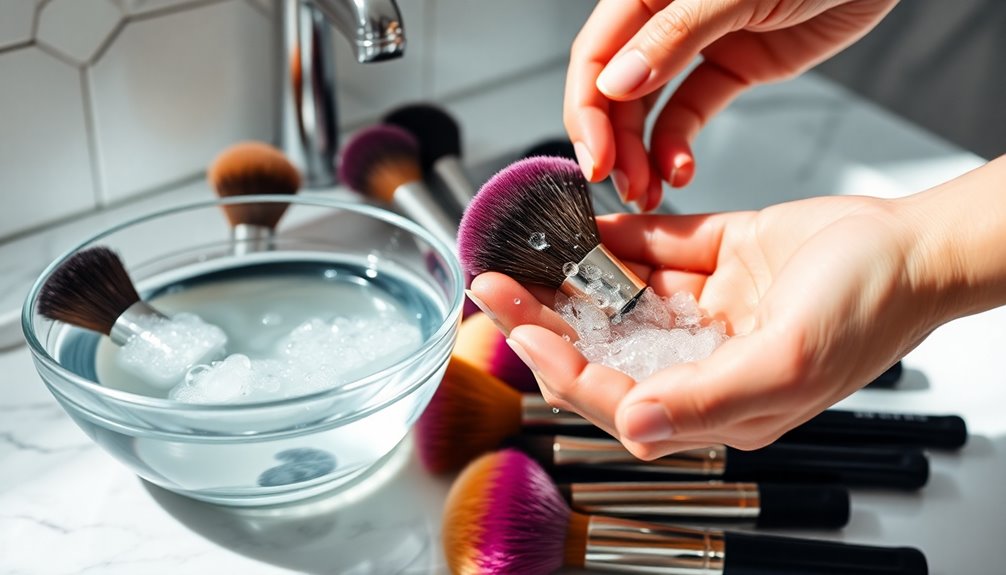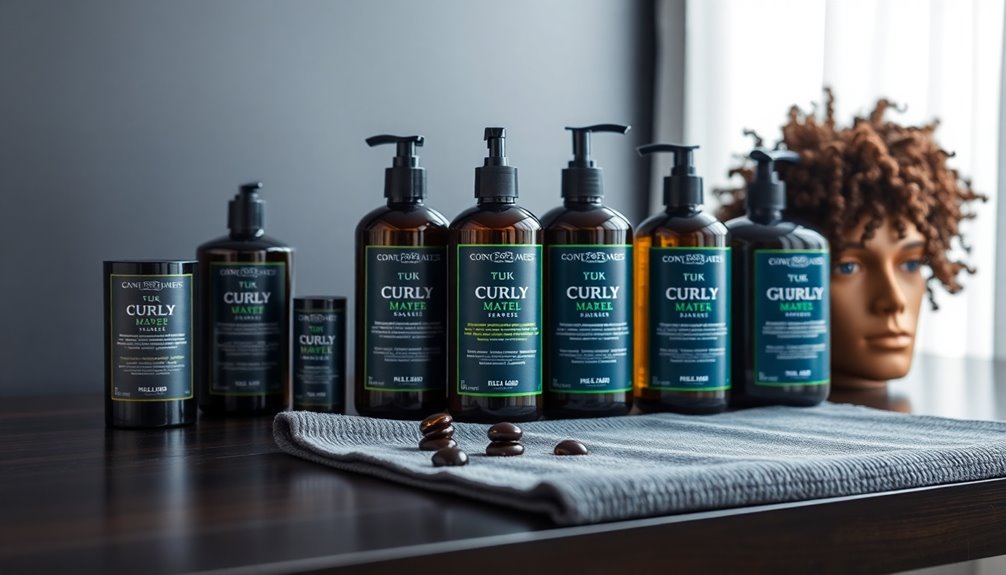If you are new to skincare and looking to incorporate The Ordinary into your routine, it is recommended to start with a simple regimen. Firstly, cleanse your skin with the hydrating Squalane Cleanser. Following that, apply Hyaluronic Acid 2% + B5 to enhance moisture retention. Finally, seal everything in with Natural Moisturizing Factors + HA. If you have specific skin concerns such as acne or dullness, consider using targeted treatments. Remember to patch test new products to prevent any potential irritation. Layer your products from thinnest to thickest, and be sure to adjust your routine as you discover what works best for your skin. For personalized advice, delve deeper into the topic.
Key Takeaways
- Identify your skin type (oily, dry, combination, or sensitive) to tailor your routine effectively.
- Start with a gentle cleanser like The Ordinary Squalane Cleanser for hydration.
- Incorporate a treatment such as Hyaluronic Acid 2% + B5 to retain moisture.
- Follow up with Natural Moisturizing Factors + HA to seal in hydration and protect your skin barrier.
Overview of The Ordinary
The Ordinary is a brand that aims to make effective skincare accessible to everyone by offering high-quality products at budget-friendly prices. With most items priced under $20, you can build a skincare routine without breaking the bank. The Ordinary focuses on delivering effective products backed by clinical testing, cruelty-free practices, and vegan formulations. This commitment reflects their dedication to ethical sourcing and transparency.
One of the standout features of The Ordinary is their emphasis on consumer education. They provide clear, science-based information about active ingredients, empowering you to make informed choices tailored to your skin concerns. The product names often highlight key ingredients and concentrations, making it easier to find what you need.
To further enhance customization, The Ordinary offers a Regimen Builder tool. This tool allows you to create a personalized skincare routine based on your unique needs and skin type. By utilizing this resource, you can effectively target specific skin issues while enjoying affordable prices.
Whether you're dealing with dryness, acne, or aging, The Ordinary has something to address your concerns, making it a go-to choice for anyone starting their skincare journey.
Identifying Your Skin Type
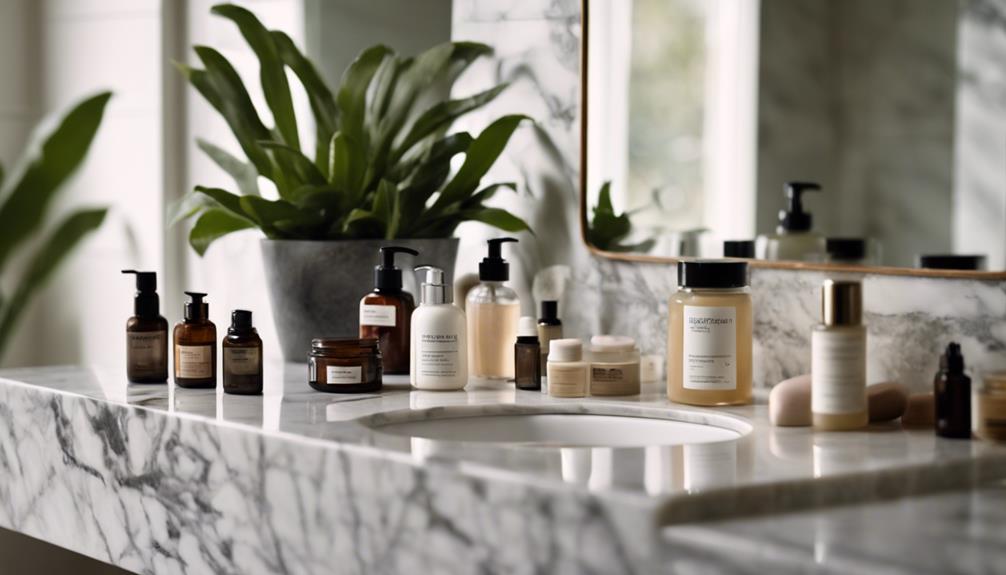
Identifying your skin type is essential for choosing the right products that cater to your unique needs.
By understanding common skin concerns and how your skin behaves throughout the day, you can tailor your skincare routine effectively.
Let's break down the different skin types and their characteristics to help you make informed choices.
Understanding Skin Types
Knowing your skin type helps you choose the right products for an effective skincare routine. There are four primary skin types: oily, dry, combination, and sensitive.
Oily skin tends to have a shiny appearance and enlarged pores, often leading to acne due to excess sebum production.
If your skin feels tight and looks flaky or rough, you likely have dry skin. This type craves hydrating ingredients like hyaluronic acid and squalane to restore moisture.
Combination skin shows traits of both oily and dry skin. You might notice an oily T-zone (forehead, nose, chin) but dryness on your cheeks, requiring a balanced approach when selecting products.
For those with sensitive skin, reactions like redness and irritation may occur with certain products or environmental factors. It's vital to choose gentle, fragrance-free formulations to avoid discomfort.
When exploring effective products from The Ordinary, tailor your selections based on your specific skin type. This way, you'll guarantee your skincare routine addresses your unique needs, making your journey to healthy skin much smoother.
Common Skin Concerns
Understanding common skin concerns helps you tailor your skincare routine to effectively manage issues like acne, pigmentation, and signs of aging. By identifying your skin type, you can choose targeted products that address your specific needs.
Here are the common skin types and their concerns:
- Oily Skin: Characterized by excess sebum, it often leads to enlarged pores and acne. Look for products that help control oil without stripping moisture.
- Dry Skin: Lacking moisture, this type can feel flaky and tight. Focus on hydrating products that provide long-lasting moisture and nourishment.
- Combination Skin: This skin type has both oily areas (usually the T-zone) and dry patches. You'll need a balanced approach that addresses both concerns effectively.
- Sensitive Skin: Prone to irritation and redness, sensitive skin requires gentler formulations. Always perform patch tests to avoid reactions.
Tailoring Product Choices
Choosing the right products hinges on recognizing your skin type and its unique needs. The Ordinary categorizes skin types into oily, combination, normal, and dry. Each type requires specific formulations to address your skin concerns effectively. For instance, if you struggle with acne or pigmentation, focus on products with targeted active ingredients.
To simplify your product choices, consider using The Ordinary's Regimen Builder. This tool helps you customize a skincare routine tailored to your specific needs, guaranteeing that you select the right products for your skin type.
Don't overlook the importance of moisturizing; keeping your skin hydrated is crucial, regardless of its type. Before fully incorporating any new products, always perform a patch test. This step is important to avoid adverse reactions and to guarantee compatibility with your skin type.
Basic Skincare Routine Steps

To build a solid skincare routine, you'll want to focus on selecting essential products that fit your skin's needs.
Make sure you're consistent with your daily routine, applying your products morning and evening for the best results.
Essential Product Selection
A basic skincare routine involves selecting essential products that cleanse, treat, and moisturize your skin for a healthy, radiant complexion. You want to guarantee your skin is properly cared for, so here are the three key steps to follow:
- Cleanser: Start with a gentle cleanser, like The Ordinary Squalane Cleanser. This product effectively removes impurities while keeping your skin hydrated, making sure you achieve cleansed skin without stripping moisture.
- Treatment: Next, incorporate a treatment product such as The Ordinary Hyaluronic Acid 2% + B5. This will greatly boost hydration and promote skin plumpness, helping to retain moisture throughout the day.
- Moisturizer: Finally, finish off with a moisturizer like The Ordinary Natural Moisturizing Factors + HA. This will seal in hydration and protect your skin barrier, providing essential moisturizing factors to keep your skin healthy.
Daily Routine Consistency
Establishing a daily routine consistency helps reinforce the benefits of your chosen skincare products, ensuring your skin receives the care it needs both morning and night.
Start with a simple, effective routine that includes a cleanser, a serum, and a moisturizer. By consistently using these products, you'll allow the active ingredients, like vitamin C in your serum, to work effectively, improving your skin texture over time.
In the morning, cleanse your face to remove impurities, apply your vitamin C serum for brightening and antioxidant protection, and finish with a moisturizing cream. Don't skip the sunscreen; it's essential for protecting your skin from harmful UV rays and preventing premature aging.
At night, repeat the cleansing step, then layer on your serum and a richer moisturizer to lock in hydration while you sleep.
Consistency is key—stick to this routine daily, and you'll start noticing the differences in your skin's health and appearance. Keeping a skincare journal can also help you track your progress and make necessary adjustments.
Targeting Specific Skin Concerns
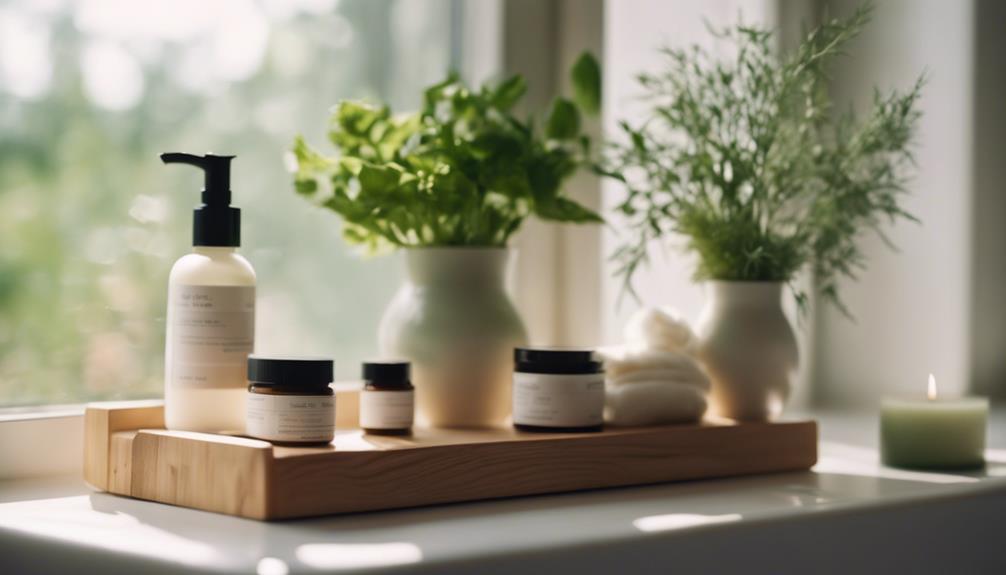
When it comes to skincare, targeting specific concerns like acne, aging, or hyperpigmentation can make a real difference in achieving your desired results. The Ordinary offers a range of targeted products that can seamlessly fit into your skincare regimen. Here's how you can tackle common skin concerns:
- Acne: Use the Niacinamide 10% + Zinc 1% serum to hydrate and control oil. Incorporate the Salicylic Acid 2% Masque for deep exfoliation once a week.
- Aging: For fine lines and improved texture, try the Multi-Peptide + HA Serum to enhance skin smoothness. The Granactive Retinoid 2% Emulsion is also effective for reducing signs of aging.
- Dullness or Hyperpigmentation: Brighten your complexion with Vitamin C derivatives and pair them with exfoliating treatments like the AHA 30% + BHA 2% Peeling Solution.
To guarantee you're choosing the right products, utilize The Ordinary's Regimen Builder. This tool helps you select appropriate targeted products based on your unique skin concerns, creating an effective skincare regimen tailored just for you.
Importance of Patch Testing
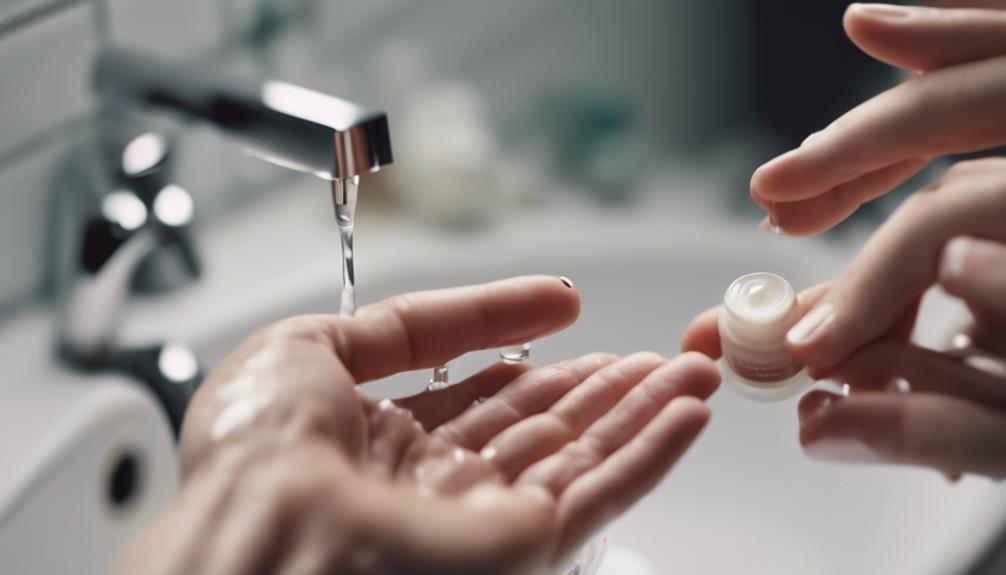
Trying new products to target specific skin concerns can be exciting, but patch testing is a must to guarantee your skin won't react negatively. Before fully incorporating Ordinary products into your skincare regimen, apply a small amount on a discreet area, like your inner forearm. This helps identify any potential allergic reactions or sensitivities.
Monitor your skin's response for 24 to 48 hours to catch any adverse reactions early. By conducting patch tests, you enhance the safety of your routine and can assess the compatibility of new ingredients with your individual skin types. This gradual introduction allows you to determine which products work best for you, minimizing the risk of irritation.
Product Layering Techniques
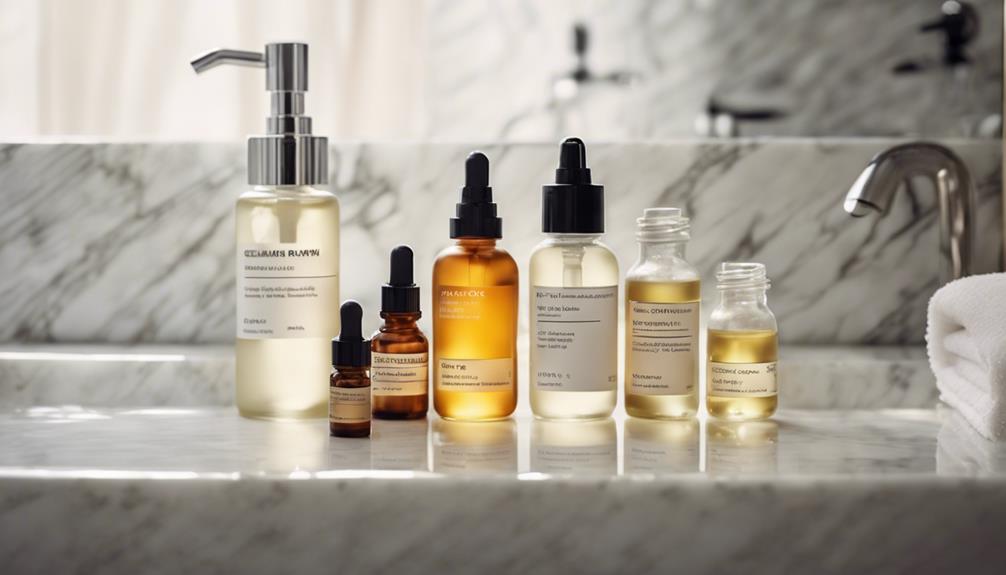
Mastering product layering techniques is essential for maximizing the benefits of your skincare routine. By understanding how to layer The Ordinary products effectively, you can guarantee your skin responds positively. Here are some tips to help you create a routine for every skin type:
- Start with thinnest to thickest: Begin with water-based serums and end with creams or oils. This order promotes ideal absorption of active ingredients.
- Allow absorption time: After applying each layer, wait until it's fully absorbed before applying the next product. This enhances effectiveness and helps you avoid pilling.
- Limit serums: It's best to avoid using more than three serums in a single routine. This minimizes potential irritation and product conflict, especially with certain active ingredients like retinoids and acids.
Always remember to patch test new products before incorporating them into your routine, especially when layering multiple active ingredients.
Staying Updated on Products
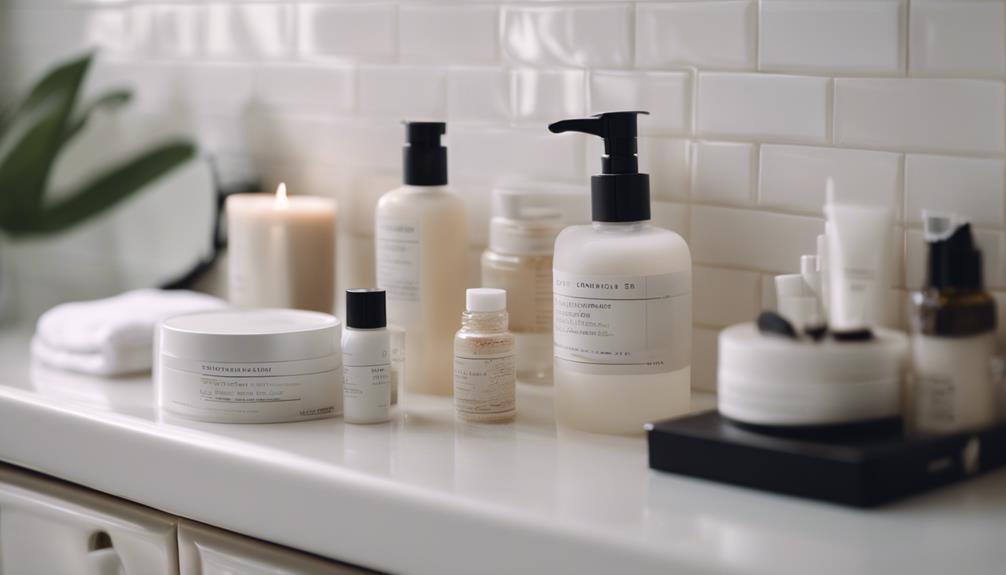
How can you stay informed about the latest products and trends from The Ordinary? One effective way is to subscribe to their email newsletter. By doing this, you'll receive updates on new product launches, promotions, and skincare tips directly to your inbox. This guarantees you never miss out on exciting new skincare products together with exclusive offers that can enhance your routine.
Another great option is to follow The Ordinary on social media platforms. This allows you to engage with the community, share experiences, and stay in the loop about product releases and expert advice. You'll find a wealth of information that can help you make informed decisions about your skincare journey.
Don't forget to check The Ordinary's official website regularly. There's a dedicated section for new arrivals and product updates, so you can easily access the latest innovations. Participating in community feedback initiatives can also be beneficial, as it gives you a voice in shaping future products.
Can I Use The Ordinary Skincare Products for My Beginner Routine?
Yes, you can definitely use The Ordinary skincare products for your beginner skincare routine. The brand offers affordable and effective products that cater to a wide range of skin concerns. When starting out, focus on gentle cleansers, hydrating serums, and a quality moisturizer to begin with. Follow these beginner skincare routine tips for best results.
Conclusion
As you begin your skincare journey with The Ordinary, think of your routine as a canvas waiting for your personal touch. Each product is a brushstroke, adding depth and color to your skin's story.
By understanding your skin type and concerns, you'll create a masterpiece that reflects your unique beauty. Remember, patience is key; allow your skin time to bloom, and soon you'll see the radiant transformation emerge like a flower in spring.




